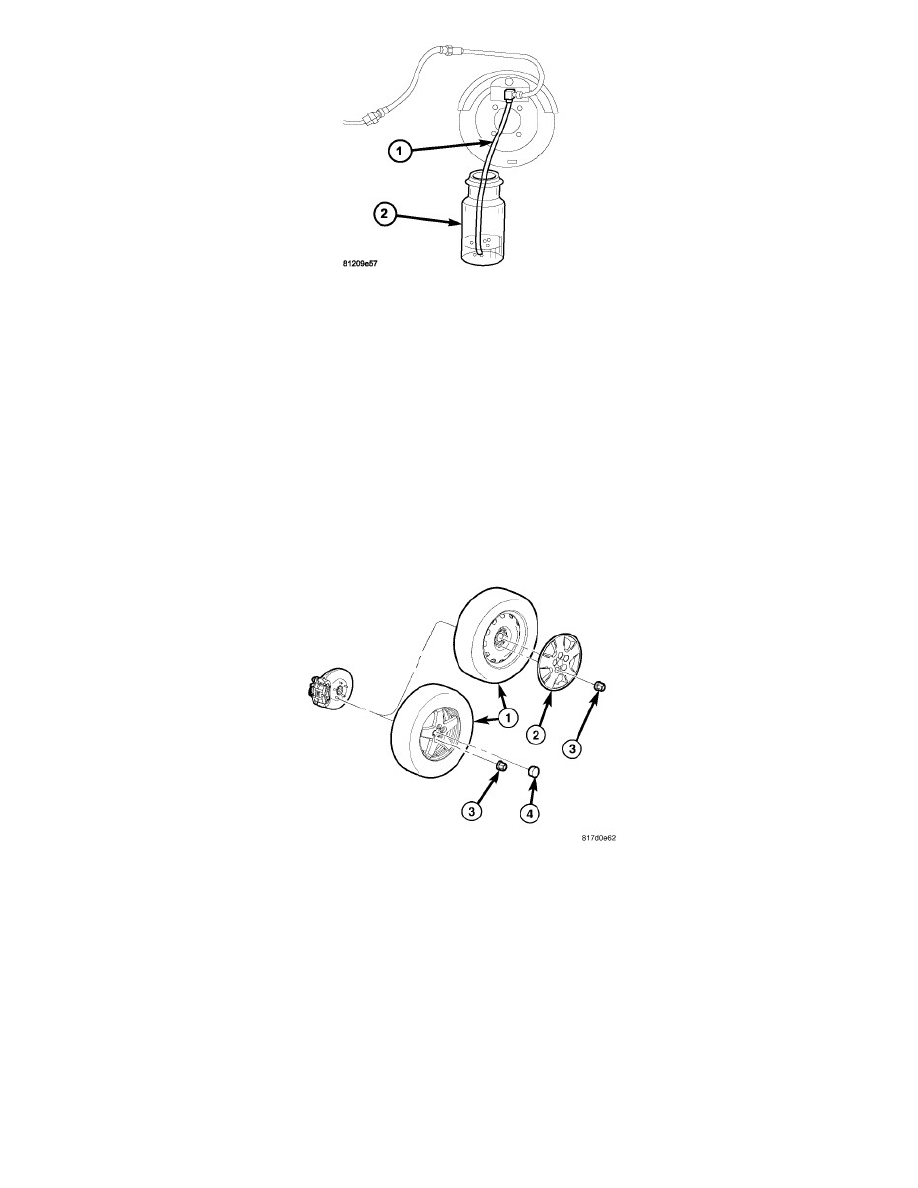Journey FWD V6-3.5L (2009)

1. Attach a clear plastic hose (1) to the bleeder screw and feed the hose into a clear jar (2) containing enough fresh brake fluid to submerge the end of
the hose.
2. Have a helper pump the brake pedal three or four times and hold it in the down position.
3. With the pedal in the down position, open the bleeder screw at least one full turn.
4. Once the brake pedal has dropped, close the bleeder screw. After the bleeder screw is closed, release the brake pedal.
5. Repeat the above steps until all trapped air is removed from that wheel circuit (usually four or five times).
6. Bleed the remaining wheel circuits in the same manner until all air is removed from the brake system. Monitor the fluid level in the master cylinder
reservoir to make sure it does not go dry.
7. Check and adjust brake fluid level to the FULL mark.
8. Check brake pedal travel and feel. If pedal travel is excessive or if the pedal feels excessively spongy, some air may still be trapped in the system.
Re-bleed the brakes as necessary including the IPB Caliper Brake Bleeding Procedure on the rear calipers as listed below.
9. Test drive the vehicle to verify the brakes are operating properly and pedal feel is correct.
IPB CALIPER BRAKE BLEEDING PROCEDURE
NOTE: The following procedure is normally only necessary if a rear brake caliper has been removed and installed, or replaced.
Perform the following procedure on each rear brake caliper as necessary.
1. Raise and support vehicle. See: Maintenance
2. Remove the wheel mounting nuts (3), then the tire and wheel assembly (1).
